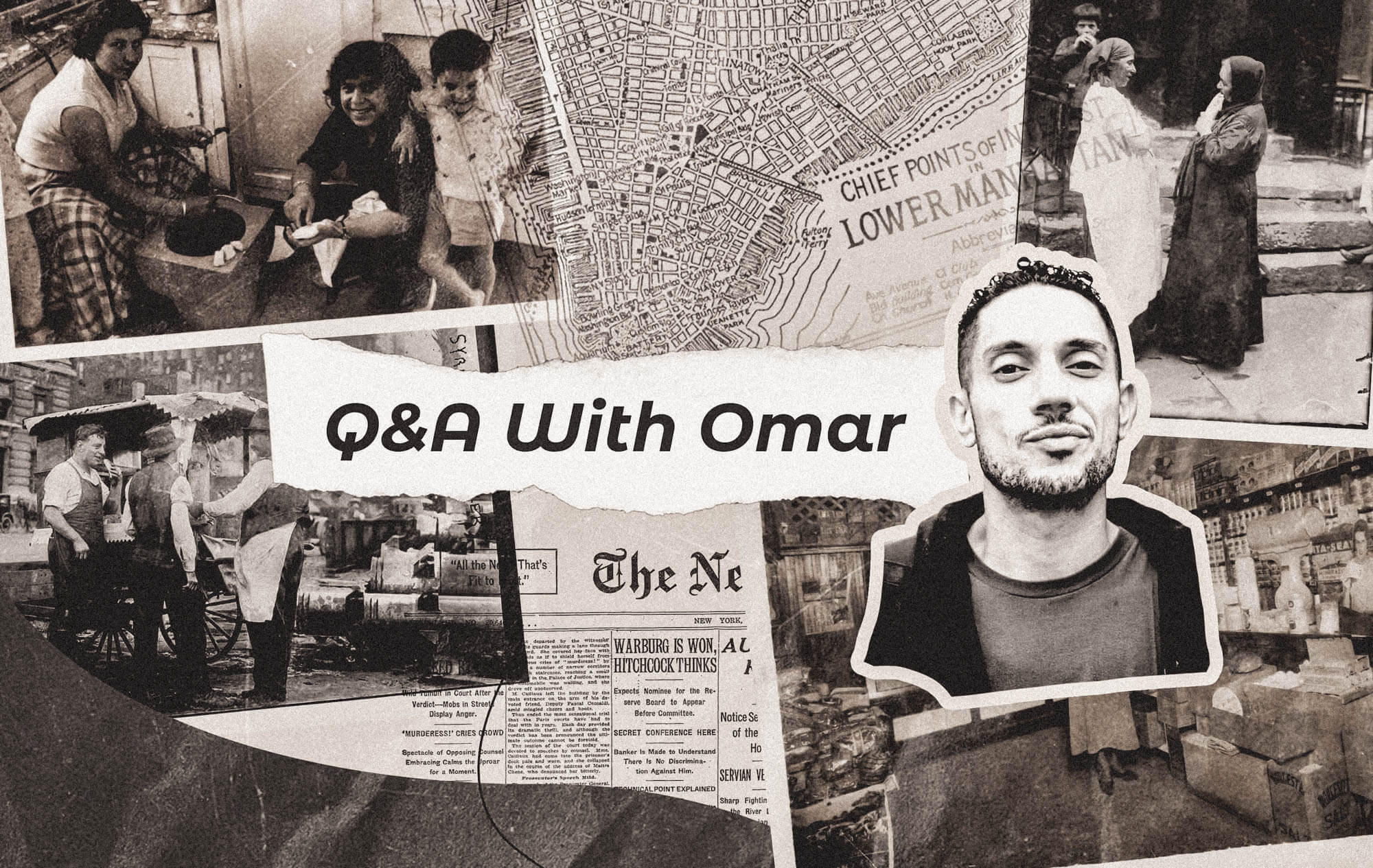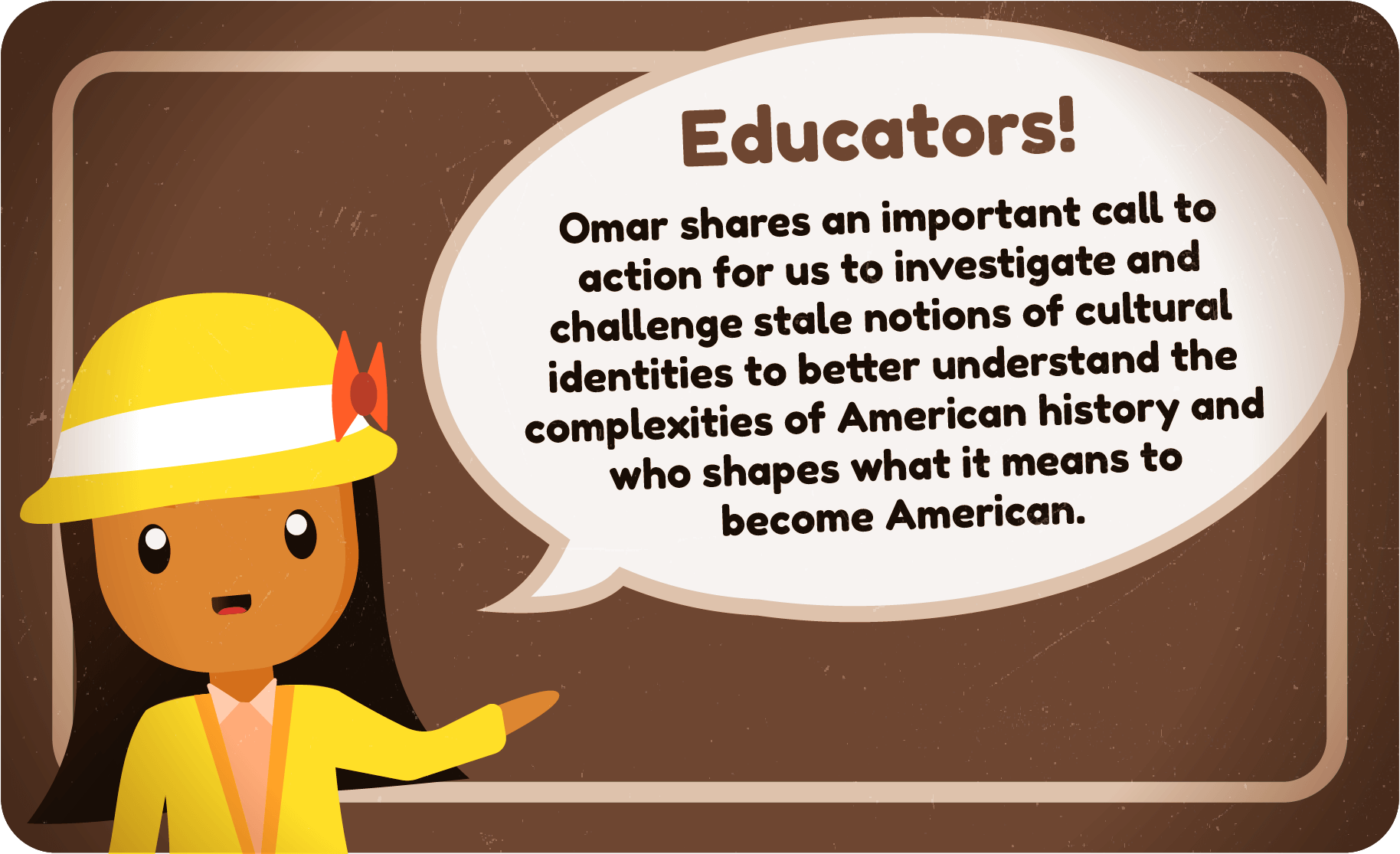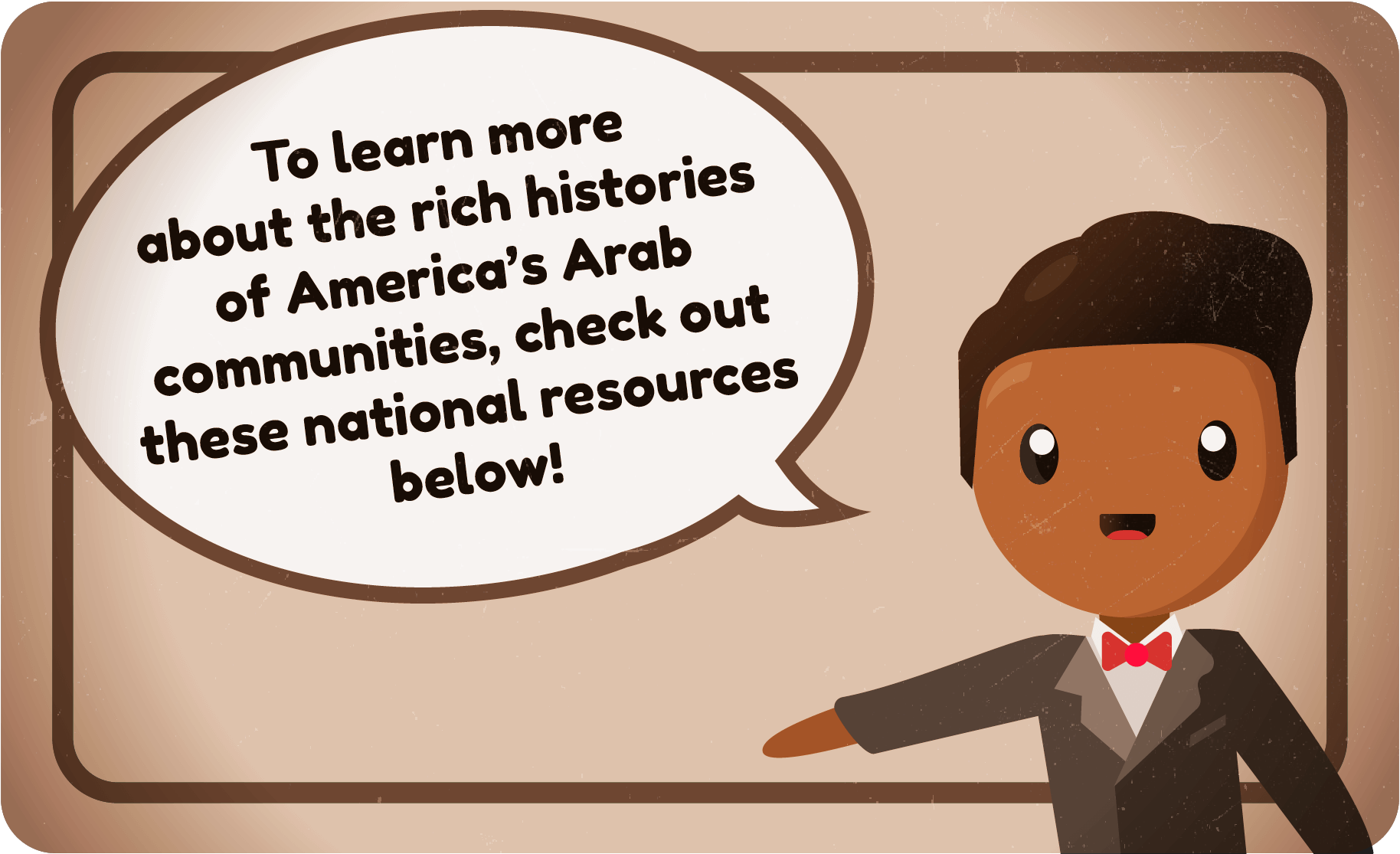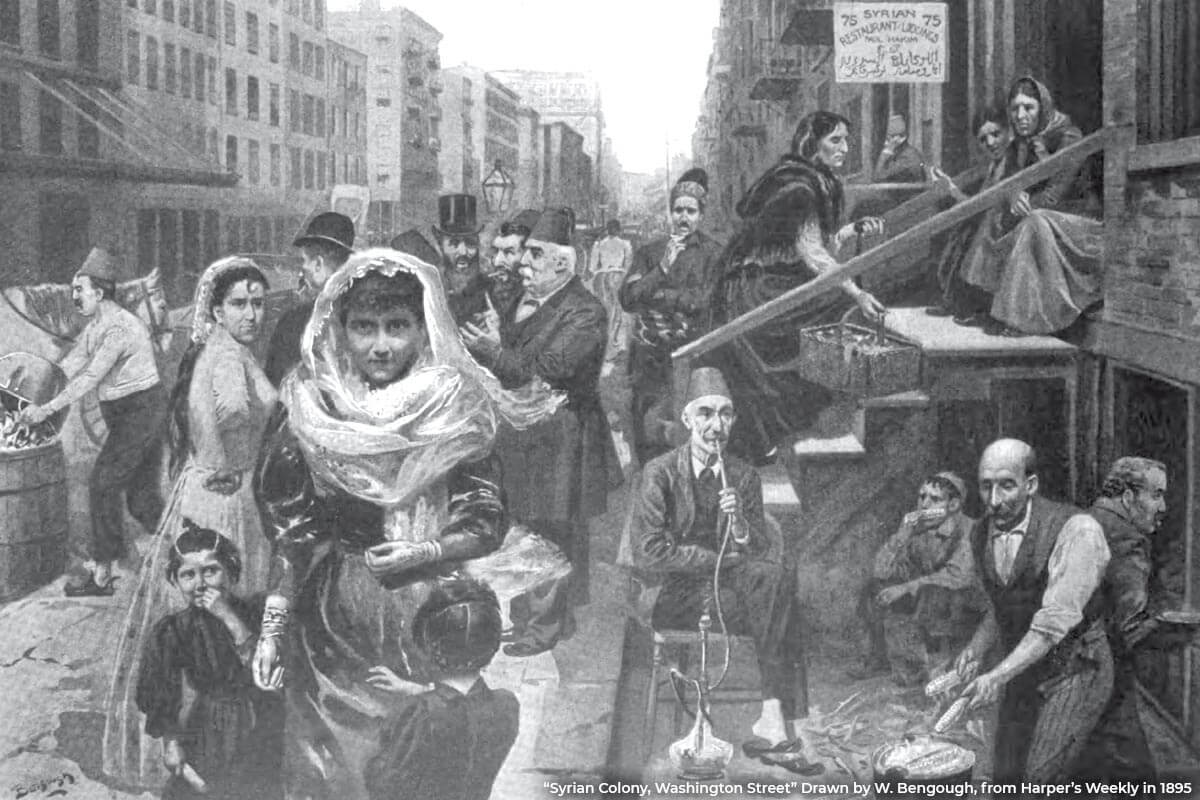
Little Syria
On this page, you will find information about the history of the Little Syria neighborhood in New York City from 1880-1940 and meet an artist who uses history as a source of inspiration for his work.
Little Syria was a thriving neighborhood where thousands of Arab Americans from Greater Syria—a region now known as Palestine, Israel, Syria, Jordan, Lebanon and Iraq—lived, worked, and created world-renowned poetry and literature in Arabic and English. Omar Offendumn, a hip hop artist, pulled inspiration from the story of Little Syria into his own artistic, historical and personal explorations as a modern-day Syrian American. In this page, he shares his thoughts on why Little Syria is important for us to remember today in our understanding of American history.
This page includes:
• Q&A with Omar Offendum
• 5-minute video of Omar Offendum’s song, “Close My Eyes”
• Links to historical societies and museums with resources about Arab American histories
• A “Close Looking” Activity
• Classroom Discussion Questions
To explore these resources and learn more about Little Syria, keep scrolling down this page.

Q: Why has the story of Little Syria, from over a century ago, resonated so strongly with you in your work today?
Omar: I’ve always wanted my work to serve as a bridge between cultures & generations, giving the different communities I’m rooted in an opportunity to appreciate each other’s perspectives. My upbringing was unique in that I immigrated to this country with my family when I was four but was able to maintain a strong linguistic & cultural connection to Syria both at home & in school. In other words, I grew up memorizing/reciting both Arabic poetry AND 90s hip-hop music simultaneously. It was only a matter of time before I started to connect the two in a meaningful way.
The neighborhood of Little Syria fascinates me in that it birthed an important wave of writers & poets whom, speaking directly to the migrant experience in America from Greater Syria (present-day Syria / Lebanon / Palestine / Jordan), were, in turn, helping to usher along a renaissance of modern poetry & literature in the Arab world more broadly. They were in many ways doing the cultural & generational bridge-building I strive to do with my work today.
Given the sheer magnitude of the Syrian refugee crisis in recent years, we are likely going to see many similar immigrant neighborhood stories develop across the world over the next few decades. I hope that my Little Syria performance project gives more people an opportunity to feel connected to this important chapter of our shared history; to feel anchored in these stories and the possibilities they hold for future interpretations of identity & global citizenry.
Q: How could this story resonate with K-12 teachers and students today? What would you want teachers to know about this history?
Omar: Some of America’s first impressions of the Arab world came from this community (& others like it that sprouted up across the US in cities like Boston & Detroit), where the foundations of Arab-American identity were being laid. From the invention of the ice cream cone at a St Louis World’s Fair to witnessing the rise of the third-best-selling poet of all time in Khalil Gibran, their collective impact on American culture has been far-reaching.
It is a narrative that I imagine would tie in well with classroom discussions of immigration, American nativism, race/whiteness, journalism, poetry/prose, and media / popular culture. There were a couple dozen newspapers being published by residents of the neighborhood in Arabic & English around the turn of the century, which for only a few thousand people is pretty impressive (and several can now be accessed online through museum & university archives). There were also a number of articles written about the community by larger NYC publications, oftentimes framed with an orientalist & xenophobic lens, which can be quite telling when juxtaposed to today’s headlines about Syrians /immigrants/refugees/etc.
Q: For educators interested in learning more about Arab American Heritage Month and how “West Asia” fits within Asian Pacific American narratives, what would you share with them?
Omar: It’s important for educators to investigate stale notions. Terms like “Middle East” & “West Asia” are relatively arbitrary general directions/designations in my opinion; but they do somewhat help to convey that this region was historically at the fulcrum of Asian, African and European experiences. By not siloing historical information into separate/ limiting categories, we might paint a more holistic picture of where & how our traditions intersect. Deep connections from the Silk Road trade routes have fostered the growth of civilizations & development of languages, religions, sciences, cuisines, philosophies, & politics across continents for several millennia. Regional cultures & histories have always overlapped in that part of the world — so it’s important for educators in the US to complicate stale notions of geography/identity.
To read the full Q&A with Omar Offendum, you can download the full text here.
Watch Omar in his work, “Close My Eyes,” a personal lyrical and visual reflection.


Investigating Stale Notions: Classroom Discussion Ideas
As we learned from Omar, Little Syria was a large community in New York City’s borough of Manhattan, filled with diverse cultural norms. After reading Omar’s Q&A we might have an idea of what Little Syria must have been like 100 years ago. Let’s take a closer look at how Little Syria was portrayed to readers in 1895 by non-Arab Americans. How does the title of this Harper’s Weekly article, “The Foreign Element in New York--The Syrian Colony,” reflect attitudes toward immigrant communities at the time?
With your students, take a few minutes to look at the image below, letting your eyes wander from corner to corner and then to the center.



What do you see?
Let’s begin by asking students to individually list 10 details they notice in the image. After writing down 10 details, take a 30 second break, and then repeat this process two more times so you have a total of 30 details. Hold on to these details, we will be using them throughout this activity!
After looking at the image, read “The Foreign Element in New York--The Syrian Colony” from Harper’s Weekly in 1895. In small groups or in pairs, ask students to discuss these questions:
How is Little Syria described in the article? Were you able to make connections between the text and your list of 30 details?
Are the writer and illustrator showing bias?
What evidence in the article and the image supports your answer?
Now that students have read the article and looked closely at the image, think about the Little Syria Omar described for us in the Q&A:
How does the Harper’s Weekly image of Little Syria differ from how Omar describes Little Syria in the Q&A above?
Throughout this activity, how can our investigation into stale notions of Arab American communities from the past inform our understandings of what it means to be American today?

If you would like to use worksheets for this activity, click on the buttons below. This classroom discussion can be modified and completed within a range of 45-60 minutes and is suitable for middle and high school students. There is a brief accompanying guide for teachers who may use this in social studies or history units about citizenship, ethnic studies, US history at the turn of the century, and immigration history.

Share it with Us!
We would love to hear how you’re using these questions with your students. Send us an email at APAC@si.edu or tag us on Twitter, Instagram, or Facebook: @smithsonianapa









